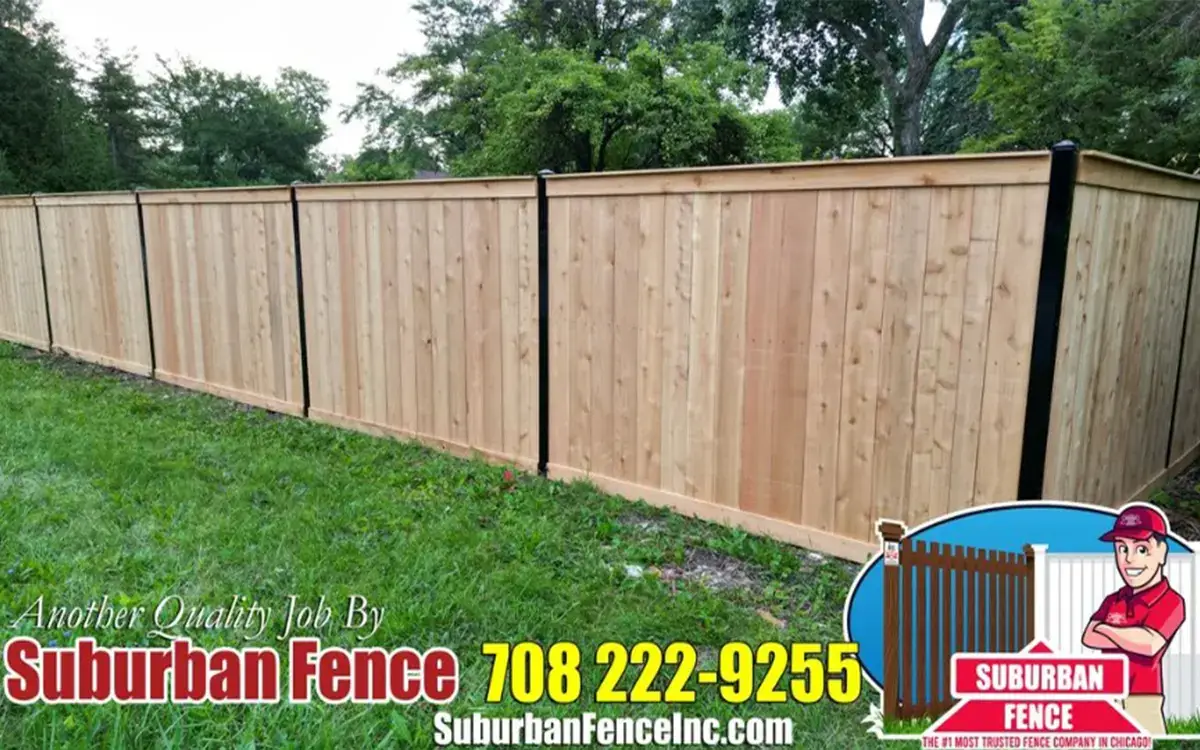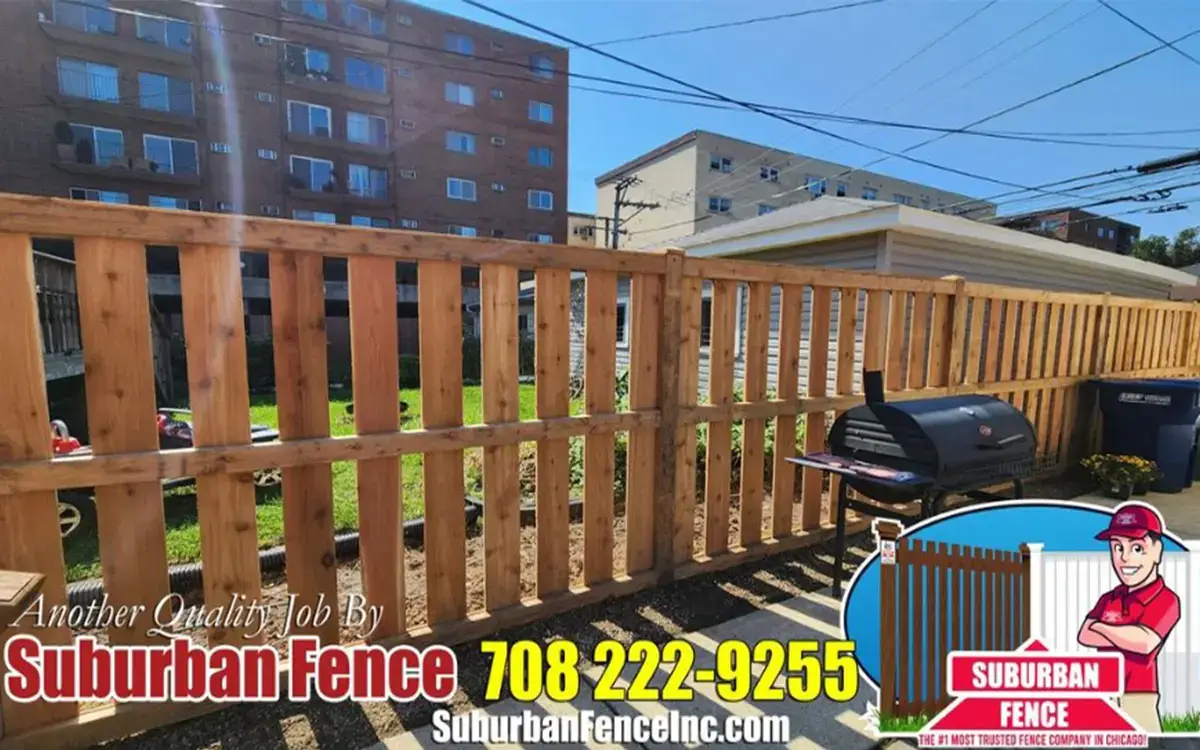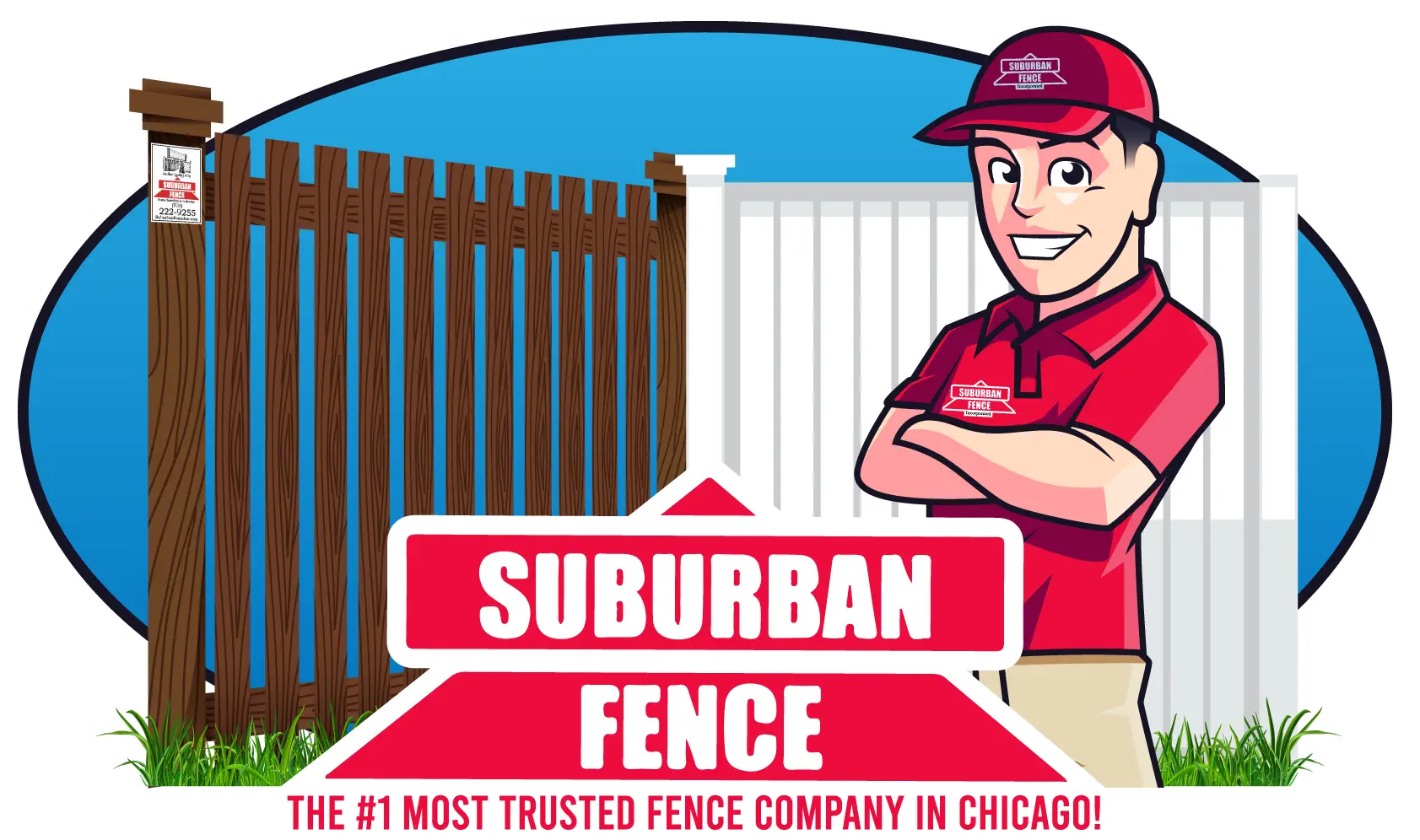
How Much Does A Wood Fence Cost?
Essential Guide To Wood Fence Costs
When planning to install a wood fence, one of the most significant considerations is the cost. However, determining the exact wood fence cost can be challenging due to various elements that influence pricing. At Suburban Fence, we’ve been installing high-quality wood fences in the Chicago area since 1977, and we understand the factors that contribute to accurate cost estimation.
In this detailed guide, we’ll explore the different aspects that affect wood fence pricing, from material selection to installation considerations. We’ll also provide insights into how these factors influence the overall installation cost, helping you make a decision that aligns with your budget.
What Is The Average Cost Of Wood Fence?
When budgeting for a wood fence, it’s important to consider a range of costs that can vary significantly depending on the specifics of your project. For many homeowners, the total expense typically ranges between $2,500 and $4,500. On a per-foot basis, you might expect to spend anywhere from $15 to $35.
This range includes both the cost of materials and the labor involved in constructing the fence. Keep in mind that these figures are not set in stone; the final price can shift based on factors like the type of wood you choose, the height of the fence, and any unique features or finishes you want to add. To align your budget with your vision, it’s advisable to consult with professionals who can provide a more precise estimate tailored to your specific needs.
What Are The Factors Affecting The Cost Of Fencing?
The cost of a wood fence is influenced by more than just the materials used; it also depends on several key factors. Understanding these elements will give you a clearer picture of what to expect and how to manage your budget effectively.
1. Type Of Wood
The wood you choose for your fence will significantly impact the cost, maintenance, and durability. Below are the most common options, each with its own characteristics.
- Pine
Pine is a softwood that is often chosen for its affordability, with costs ranging from $1 to $5 per linear foot. It is typically pressure-treated to resist rot and pests but requires regular maintenance, such as staining or sealing, to prevent warping, especially in humid climates. Pine is a good option for those on a budget, but be prepared for ongoing upkeep to maintain its appearance and integrity.
- Cedar
Cedar is popular for its natural resistance to rot and insects, with costs generally between $3 and $4 per linear foot. It has a long lifespan with less maintenance than pine and is known for its pleasant aroma and attractive grain. Over time, cedar weathers to a silver-gray patina if left untreated, which many homeowners find appealing. Cedar is a middle-ground option that balances cost with durability and low maintenance.
- Redwood
Redwood is a premium choice, prized for its rich color, durability, and resistance to decay and insects. It typically costs around $8 per linear foot. Redwood requires minimal maintenance and maintains its beauty over time, making it a great investment for those seeking a high-quality, long-lasting fence. Its initial higher cost is offset by its longevity and minimal upkeep requirements.
- Oak
Oak is a dense, durable hardwood, with costs ranging from $5 to $10 per linear foot. It’s strong and able to withstand heavy use and harsh weather conditions, making it ideal for long-lasting fences. However, oak can be prone to cracking if not regularly sealed to protect against moisture. Its classic appearance and strength make it a good option for those looking for a robust fence.

2. Fence Style
The style of your wood fence significantly impacts both its cost and functionality. Different styles require different amounts of materials and labor, which can influence your budget. Here’s a look at common styles and their implications.
- Privacy Fences
These fences are designed to block views and create a secure, private space. Typically standing 6 to 8 feet tall, privacy fences require more materials and labor, resulting in higher costs, ranging from $25 to $55 per linear foot. They are ideal for homeowners looking to improve security and reduce noise.
- Board-on-Board Fences
A variation of the privacy fence, board-on-board designs add depth and visual interest. Boards are attached on alternating sides of the fence rails, preventing gaps even as the wood shrinks. This design is more intricate and material-intensive, often placing it at the higher end of the privacy fence cost range.
- Picket Fences
Known for their traditional charm, picket fences are typically 3 to 4 feet high and are more decorative than functional. They cost between $10 and $30 per linear foot, making them a budget-friendly option for front yards or gardens where full privacy isn’t necessary.
- Lattice-Top Fences
Combining the solid construction of privacy fences with a decorative lattice top, these fences offer a balance between privacy and aesthetics. The lattice allows light and air to pass through and can also serve as a support for climbing plants. Adding a lattice top increases the overall wood fence cost per foot by $2 to $12, depending on the design complexity.
- Split-Rail Fences
A rustic, open style often used in rural or large properties, split-rail fences consist of horizontal rails inserted into vertical posts. This style is more affordable, with costs ranging from $10 to $25 per linear foot, but it doesn’t provide privacy or security.
- Shadowbox Fences
Also known as “good neighbor fences,” shadowbox designs are built with alternating boards on either side of the fence rails, giving a uniform look from both sides. They offer a balance between privacy and openness, with costs typically ranging from $20 to $40 per linear foot.
3. Property Terrain And Installation Complexity
Factors such as the slope of the land, soil conditions, and obstacles like trees or existing structures can add challenges to the installation process, affecting the overall wood fence installation cost.
- Sloped Terrain
Installing a fence on sloped terrain requires additional work to ensure the fence is level and stable. Two main methods are used: stepped fences, which follow the slope in a stair-step pattern, and racked fences, which follow the contour of the ground. Both methods require more labor and materials, which can significantly increase costs.
- Soil Conditions
The type of soil on your property affects how deep posts need to be set and the amount of concrete required for stability. For example, sandy or loose soils may need deeper post holes and more concrete, while rocky or clay-heavy soils can be challenging to dig, requiring specialized equipment and increasing labor costs.
- Obstacles
Trees, roots, large rocks, sidewalks, and existing structures can complicate the installation process. Working around these obstacles often requires custom solutions, such as altering the fence layout or using different installation techniques, which adds to both material and labor costs.
4. Additional Costs
Beyond the basic materials and labor, there are several additional options and features that can add functionality and appearance to your wood fence, but they also come with extra costs.
- Gates
Adding a gate to your fence is essential for access, but it does increase the overall cost. Depending on the size, type, and complexity (manual vs. automatic), gates can range from $150 to $1,000. Automatic gates, which require motorized systems and electrical work, are typically more expensive.
- Post Caps
Post caps protect the tops of fence posts from moisture and decay while adding a decorative element to your fence. They can range in price from $5 to $50 each, depending on the material (wood, metal, or glass) and design.
- Sealing, Staining, And Painting
To protect your wood fence and extend its lifespan, applying a sealant, stain, or paint is crucial. This can add $1 to $4 per linear foot to your costs, but it significantly enhances the fence’s durability and appearance. Sealing maintains the wood’s natural look, staining enhances its color, and painting provides the highest level of protection with a solid color.
How Do I Estimate The Cost Of A Wood Fence?
To estimate the cost of your fence, start by measuring the total length of the area you want to enclose. Then, calculate the number of posts, rails, and pickets required based on your chosen design. Don’t forget to factor in concrete for securing posts.
For example, for a 1,000-foot fence with posts spaced 7 feet apart, you would need about 144 posts. The number of rails and pickets will depend on the design, and additional materials like concrete must be included in your calculations. Once you have your material costs, add labor expenses to arrive at a total estimate.
Manage Wood Fence Costs With The Right Company
With a clear understanding of wood fence pricing, you can confidently plan your project. Working with experienced professionals ensures your fence meets both your functional and aesthetic needs, while staying within budget.
At Suburban Fence, we specialize in custom wood fences, chain-link, aluminum, and vinyl options. Serving Chicago since 1977, our team of professionals brings over 18 years of experience to every project. Fully licensed and bonded, we are committed to providing top-quality fence service. Call us at (708) 222-9255 for a FREE quote and let us help you create the fence of your dreams—on time and within budget.
